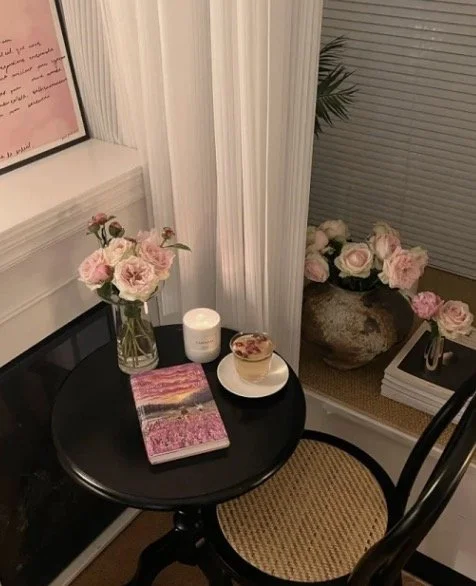
Reflection helps us see whose voices are missing in education.
— Tan (2022, p. 13)
Reflections
-

Fieldwork
-

Professional experience- Art Integration
-

Leadership- Drama & Literacy
Fieldwork
Looking back on my experience at the Friday Night Writing Workshop with Penn GSE and Writing Center, I realize how much the experience reshaped my understanding of adolescent literacy. During the program, I assumed that students needed structure, clarity, and academic support, but I left with a deeper appreciation for the fact that joy, emotion, play, and creativity are equally important components of literacy development. In this space, I saw how a supportive, student-centered environment can transform writing from a task to a form of self-expression. Through programs such as Chloe's Cloud Poetry and Oreo Drawing Activities, I have witnessed the light that shines when students have the opportunity to combine drawing, storytelling, and metaphor. These moments reminded me that multimodal literacy is more than just an instructional strategy-it's also a way to affirm students' identities and honor the different ways they make meaning from the world around them. Incorporating a variety of art forms, drawings, and crafts into the workshop, it's interesting to explore the joys of literature with children from third grade to middle school.
The field trip also challenged me to be more attentive, to pay more attention to emotions, and to be more responsive, especially in the context of remote tutoring. Working with Andy through Zoom taught me that teaching literacy in virtual spaces requires more than technical skills; it also requires empathy, patience, and adaptability. I had to read his body language, adjust my tone of voice, and utilize tools like Zoom annotation to maintain connection and clarity. In doing so, I realized how important it is for educators to bridge the emotional and technical distance, especially when students may have felt isolated.
Each student I worked with reminded me that literacy doesn't just exist in the written word-it can be found in images, conversations, metaphors, and even cookies. This practice pushed me to go beyond traditional teaching and trust my students' imaginations. As Banks (2015) notes, “Teachers must reflect on how policies affect students differently,” and I would like to extend that to say that we must also reflect on how each child experiences literacy differently.
Professional experience- Art integration
Reflecting on my experience in Dr. Broderick's Art Integration Seminar, I find that the power of art is not a supplement to learning, but rather a central and generative force in learning. Through hands-on workshops in tie-dye, embroidery, printmaking, watercolor and acrylics, I was invited to rethink what it means to “know” and “express” in the classroom. Each medium opened up a new way of thinking about how students, especially elementary and middle school students, engage with complex literacy and science concepts through tactile, visual, and physical experiences.
One of the most memorable activities was the embroidery session where we were encouraged to “write” without words. Stitch by stitch, I found myself reflecting on patience, care, and revision-skills that are closely related to writing. Similarly, our tie-dye and watercolor explorations became metaphors for the scientific process: diffusion, transformation, layering, and cause and effect. These art forms not only allow us to creatively represent content knowledge, they also provide space for emotional expression, storytelling, and personal identity. As Eisner (2002) reminds us, “Art teaches children that there can be more than one solution to a problem and more than one answer to a question.”
This approach reaffirmed my belief in multimodal learning and prompted me to think more critically about how we define “literacy” in schools. Arts integration allows students to overcome uncertainty, follow their curiosity, and communicate in ways that feel authentic to them. It also creates inclusive entry points for students who may feel disconnected from traditional forms of reading and writing. Whether it's illustrating a scientific process through printmaking or responding to a novel through embroidery, these experiences foster deeper levels of engagement, emotional connection, and creativity.
Leadership- Drama & Literacy
I had the opportunity to attend a thought-provoking workshop at Penn GSE on the topic of integrating drama into curriculum design, particularly in the context of bilingual literacy. The session focused on how theater tools (such as tabletop performances, role-playing, playwriting, and reader's theater) can be used to not only deepen literary analysis, but also to promote a richer, more concrete understanding of multilingual texts. The workshop featured many powerful examples of how theater can be seamlessly integrated into Spanish and English language arts classrooms. I was particularly inspired by one example shared by one of the presenters: a bilingual teacher who used a bilingual play adaptation of a traditional folktale to explore identity, culture, and linguistic rhythms. Students were not only reading and analyzing texts; they were moving, performing, and living those texts. Among them, we also led a team to report on our lesson plans for integrating Disney movies into elementary literature curriculum design
One particularly memorable activity invited us, as participants, to step into the shoes of characters from Esperanza Rising and Cajas de Cartón, two bilingual literary works. Through role-play, we explored the emotional complexity of migration, memory, and resilience. This embodied reading experience helped me realize how drama can activate empathy and critical thinking in ways that traditional discussion might not always reach—especially for students who are still developing language fluency in either English or Spanish.
What struck me most was how drama created multiple entry points into literacy—for students who love to act, for those who prefer visual storytelling, and for multilingual learners who thrive when they can express ideas beyond written text. The performative space allowed students to translate meaning through gesture, voice, and interaction, making literature more accessible and joyful.

Reference
Eisner, E. W. (2002). The arts and the creation of mind. Yale University Press.
Banks, J. A. (2015). Cultural diversity and education: Foundations, curriculum, and teaching (6th ed.). Routledge.








